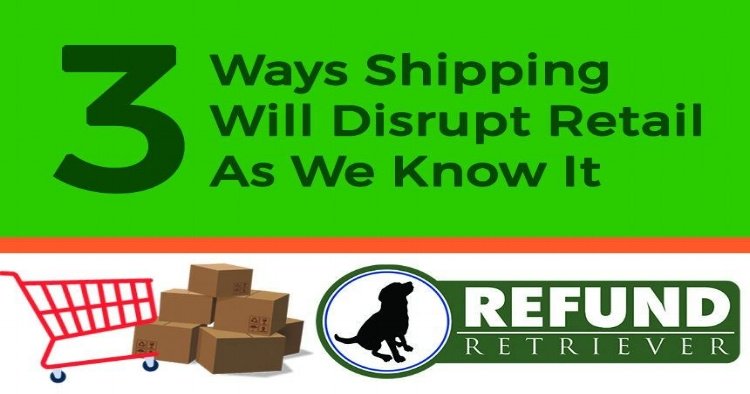3 Ways Shipping Will Disrupt Retail As We Know It

No longer is online shopping a luxury but instead, it’s a necessity. With a recent survey from AlixPartners identifying the average American consumer had just under 15 deliveries from online purchases made to them within one year, it’s impossible to ignore the impact that shipping has on the retail industry at large.
Keeping this in mind, what can merchants and shippers alike expect from the ongoing demands that consumers are placing on them when it comes to strengthening their shipping effort, while also aiming to keep up with the growing disruption impacting shipping right now?
Explore the future of shipping with a look at three up-and-coming ways that shipping is changing the retail landscape below.
1. The Sky Isn’t the Only Limit
Sure, sky’s the limit when it comes to transporting items from point A to point B – helping to get inventory shipped across the world. But the reality is that merchandise can often be delivered more real-time in local marketplaces and nationwide thanks to road warriors – most notably FedEx and UPS. This said, one new carrier option in particular is starting to make its mark in this otherwise niche marketplace.
Roadie, the nation’s first “on-the-way” delivery network – is app-based and offers a service that puts extra space in passenger vehicles to work by connecting people with items to send with drivers already heading in the direction they need something transported.
For retailers, this opens up the opportunity to ship larger scale items for less, move inventory from one location to another and welcome an often easier and greener way to transport items and reach more customers. And since the drivers of Roadie are already planning to be on the road, this simply adds value and dollars to their own road experience and thus connects the dots between merchants, consumers and drivers – bringing a whole new way to “ship” to life.
With over 4,000 cities having already experienced the perks of Roadie, it’s fair to say this collaborative model is enabling fast, flexible and low-cost delivery options for senders and gaining pace to compete with traditional shippers such as UPS and FedEx.
2. Less Talk, More Action
The concept of consumers shipping items to stores for pick-up when not available – or preferred – to be shipped to their residences isn’t new, yet how this will play-out in the future is starting to change.
Historically, retailers would have to engage in conversations with customers to identify what it is they were picking up. Now, however, many retailers are introducing lockers to eliminate this conversation, save time and enhance the shopper’s experience.
One company revolutionizing this space is LuxerOne, which provides customizable lockers that can be branded to compliment the retail experience in addition to offering analytics, reporting and automating functions for both pick-up and return-of-inventory options.
It’s a secure yet savvy experience that has won the attention of major retailers nationwide and as CEO Arik Levy explains, Luxer One is “ultimately providing double-duty for omnichannel retailers. We designed a shopper experience that’s incredibly fast and easy for customers, while also reducing retail labor costs. It’s the kind of store automation technology that results in happier customers and more streamlined operations.”
With instant gratification often resulting in quick spending online, retailers need to prepare for shipping options that include in-store pick up without compromising their labor costs. Lockers are a great way to do this.
3. Options Thanks to Manipulation
The appeal of overnight delivery is real. Customers want – and expect – items to be delivered not only fast, but free, as well. This said, money continues to influence buyers and as a result, strategic manipulation can often sway consumers from wanting something now to be willing to wait in exchange for dollars.
This strategy is referred to as “demand shaping” and is increasingly becoming more and more popular among online retailers in an effort to save their own shipping costs while streamlining their shipping operations. An example of this may be if a customer proceeds to check-out online and hits the “overnight” shipping option and is then presented with a pop-up box offering a promotional voucher of a specific dollar amount to be used on a future purchase if they select another shipping option – such as 3 or 5 days.
This incentive can lure many buyers to wait for their shipment a few more days while also helping the retailer gain a stronger chance for repeat business. It’s a win-win situation that few retailers are using – yet many can benefit from.
With shipping undoubtedly shaping the future of retail, it’s important for online and physical retailers alike to consider how shipping strategies can better enhance their overall operations. Become the leader in your marketplace by introducing these futuristic strategies to help your business stand-out from others, while also helping to strengthen sales and ease shipping operations along the way.